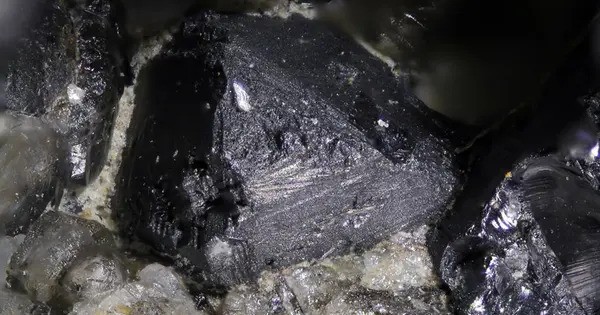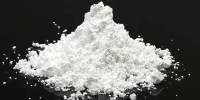Lead selenide (PbSe), or lead(II) selenide, a selenide of lead, is a semiconductor material. It is primarily known for its semiconducting properties and is used in various electronic and optoelectronic applications. It may be formed by direct reaction between its constituent elements, lead and selenium.
It forms cubic crystals of the NaCl structure; it has a direct bandgap of 0.27 eV at room temperature. (Note that incorrectly identifies PbSe and other IV–VI semiconductors as indirect gap materials.) A grey solid, it is used for manufacture of infrared detectors for thermal imaging. The mineral clausthalite is a naturally occurring lead selenide.
Properties
- Chemical formula: PbSe
- Molar mass: 286.16 g/mol
- Melting point: 1,078 °C (1,972 °F; 1,351 K)
- Appearance: PbSe is a solid, typically a grayish-black to dark brown crystalline material.
- Crystal Structure: It crystallizes in the rock salt (NaCl) structure, which is similar to that of sodium chloride.
- Electrical Conductivity: As a semiconductor, PbSe has a bandgap in the infrared range, making it highly suitable for infrared (IR) applications.
Electrical and Optical Properties
- Bandgap: PbSe has a relatively small bandgap (about 0.27 eV at room temperature), which means it can absorb and emit infrared radiation. This property is particularly important in thermal imaging and IR sensors.
- Photodetectors: It is used in the production of photodetectors, such as infrared detectors for night vision equipment and thermal cameras, due to its sensitivity to infrared light.
Uses and Applications
- Infrared Detectors and Sensors: Because of its narrow bandgap, PbSe is commonly used in infrared (IR) detectors, including night-vision goggles and thermal imaging cameras.
- Thermoelectric Materials: PbSe is also used in thermoelectric applications, particularly in devices designed to convert heat into electricity. The material is known for its high thermoelectric efficiency, especially at high temperatures.
- Optoelectronics: It is used in optoelectronic devices, including infrared lasers, light-emitting diodes (LEDs), and photovoltaic cells for energy harvesting in the infrared spectrum.
Toxicity and Environmental Considerations
Toxicity: Lead compounds, including PbSe, are toxic to humans and the environment. Lead exposure can cause neurological and other health problems. Therefore, proper safety measures are essential when handling PbSe, especially in industrial settings.
















